Manid Hyena
A persistsant hyena found in the harsh deserts, unforgiving tundra and arid steppes across northern Emynea. Like other widespread species, their Kaithur varies by where they live. Yet they are more likely to be remembered for their nauseating diet! These hyena are the garbage disposal of their barren habitats, capable of hunting prey, foraging for fruit and stripping down carccasses in order to survive! They are safely able to consume rotting flesh, infected corpses, dense bones and even garbage or dung, chomping down whatever they can find. Manid hyena are particularly skilled in crushing up bones and gobbling up the pieces!
Despite their sickening taste in food, they are essential to the balance of their sparse desert biomes. In fact, the feces of hyena with Aasaru's Fertility actually amplifies the growth of desert and tundra plants and makes soil more fertile! In this way, they play an even more pivotal role, not only breaking down waste but converting this waste into highly fertile compost. Manid hyena are associated with fertility in desert cultures for this reason. Their second ability varies by region. Those with Rithaldis' Form live in the Shamsi Desert, those with Ilnid's Form live in the Arabiyyan Desert and those with Iska's Skin or Form live in the Frozen Wastes. All others usually inherit Gokrilvek's Step. There are folktales and rumors of more variants out there such as an aquatic hyena in Bharat!
|
First AbilityAasaru's Fertility Manid Hyena with Aasaru's Fertility are able to increase the fertility of all desert and tundra plants, this effect concentrated in the feces of this species. Their refuse can increase the success of seeds and help plants thrive in otherwise doslate locations, increasing their vivacity, resiliency and overall health. Aasaru's Form Those with Aasaru's Form can convert parts of their body into a specific kind of desert or tundra plant or generate parts of this plant from their body. The exact plant differs by region and individual but Nerium Cupidinis and cacti are a common in the Shamsi Desert Second AbilityRithaldis' Form Ilnid's Form Iska's Skin Gokrilvek's Step Those with Gokrilvek's Step can enter and exit Gokrilvek's Plane while remaining totally still, slipping in and out of the physical plane at will. Can bring another with them while maintaining contact. They are essentially invulnerable so long as they don't move. |
Anatomy |
Manid hyena have a peculiar appearance with a short torso, long front legs and short hind legs, giving them a slanted back. These legs are thin and not made for extended chases, not particularly strong. Instead their jaws are the most powerful part of their body, their head massive and heavy atop a long and braod but inflexible neck. With a taste for ligaments and bones, their bite is so powerful, it can snap and splinter even Shamsi Camel bones. Meanwhile the face of a manid hyena is short with small eyes and broad, pointy ears. While their claws are blunt, they are sturdy.
Manid hyena have an exceptional sense of smell for tracking down carrion but its vision and hearing are poor. They also have an anal gland which they are able to exude from their body and spray a pungent fluid if they are attacked, the smell more than nauseating. Covered in a long, coarse and bristly coat, they are most known for their luxuriant mane which runs from the back of their skull to the base of their tail, consisting of tough long hairs which can be raised to make themselves appear larger. In their magic form, manid hyena infuse this mane with magic for an even more dramatic display, converting into solar plasma, glass, desert flora or even ice! |
Habitat |
While rarely spotted, manid hyena have a surprisingly large range. They live in dry, rocky biomes from Alkelbulan, to the Frozen Wastes and all the way into northern Yaxiya! They prefer to create their dens in rocky hills and ravines, scavenging in shrublands, woodlands and open grasslands! They are even able to survive in artctic tundra and arid deserts, one of very few decomposers in these biomes! In Alkelbulan, they are found throughout the Shamsi Desert, Birit Narim, Parsa, Sesli Plato, Kemet, Kna'an, Arabiyyan Desert, Balkurtiz and even Flumen Pontem on occasion. Those with Iska's Skin reside throughout the Frozen Wastes and into Bharat, Kunlun Shan and Xishi Shamo. Some of these hyena might veer into Nyasi za Rangi, Gaarreen Ho'aa and Kasar Wuta but are oftten out competed by other species of hyena. |
Life Cycle |
This species forms monogamous pairs, not mating seasonally but rather being fertile one day a year beginning at two to three years old. Yet in this one day, a female will mate repeatedly every twenty minutes! Pregnancy lasts around 90 days, giving birth to 1-6 cubs which won't open their eyes until 7-8 days after birth. Their mother will bring food to the den for her cubs until they are a month old, when they first leave the den, but continues to nurse them for a year. Other juveniles within a family den will also bring food unless their mother is living on her own. |
Diet |
Manid hyena are avid scavengers but might hunt opportunistically, feeding mostly on carrion and feces. They seek out ungulate carcasses (mammals with hooves), fresh bones, cartilage, ligaments and bone marrow, unbothered by rotting flesh. No matter the stage of decomposition, they can even make a meal out of bones which have been picked clean. They are able to crush bones into fine particles but will sometimes eat them whole. They are not fussy about their meals but have an aversion to vulture flesh. Between these stomach churning meals, manid hyena will forage for grasshoppers, garbage, dung and fruit like Khisbat Palm dates and Ramli al-Hanzal melons. They are occasionally atracted to human settlements for this reason, digging through trash and fresh graves. They are well adapted to dry environments as well, surviving long periods with no water, but will drink daily if available.
If they believe they can overcomes an animal, they will hunt them. While not fast or suited to running, they will try to run their prey down, grabbing its flank or groin and tearing out it's viscera. They prey on small to medium mammals, reptiles and birds or at the very least feeds on their carcasses regularly. Some of these include Raqs Gazelle, Azru Aoudad, Rompo Skunk, Qafz Jerboa, Ramil Lark, Marqat Sandgrouse, Hangkok Lizard, Mul'ataa Agama, wild boar, porcupine, Aa-hemet Donkey, Garkuwa Tortoise, horses, dogs, Tamadla Goat and Impangele Hen. In open areas, they have even been known to prey on sleeping humans, especially children, and special care must be taken to deter them from digging up bodies. While these hyena aren't usually preyed upon, they keep their distance from larger predators and even defer to them. If another predator is as large as them or smaller on the other hand, they are more likely to chase them off! |
Behavior |
Manid hyena will only emerge from their lair in total darkness and always return before sunrise. While they are solitary and shy, stubbornly feigning death when attacked, they might stand their ground over food even against larger predators. Some live in small family groups in dens while others are totally solitary yet all manid hyena scavenge individually. These dens aren't permanant fixtures which is perhaps why they aren't as territorial as other hyenas, sharing their habitat with up to seven others of their kind or even with other carnivores! What they are more possessive of is feeding grounds where bodies, feces or garbage are often found, marking these locations with their anal glands. This gland, when protruded from the body, is used in communication with their own kind. A dominant hyena presents its gland first which is reciprocated by the other, first sniffing each others' noses before inspecting anal glands. Most often, this dominance relates to age, young hyenas far more submissive. Fights are rare and are mostly ritualistic wrestling, trying to bite and grab the cheek of their opponent while evading being grabbed themselves--like hot hands but without hands! Before fighting and during confrontations with other species, they will warn opponents first by raising the hairs of their mane and activating their magic form, transforming their hair in a showy display. And unlike other species of hyena, manids aren't as vocal, mostly giving chittering laughter, schreeches, howls and soft growls.
Manid hyena dig their own burrows or make use of caves, rock formations and burrows of other animals, marking the entrances to their lairs with bones. While some might compete with wolves and other social predators, solitary hyena might instead travel with them, sharing a den and prey in symbiosis! Those of central Shamsi usually develop a strong relationship with a Hadje Sabertooth but this relationship takes time to build, both the hyena and hadje solitary by nature. The Hyena's strength and superior sense of smell is valued by the wolves and sabertooths, able to tear open and break apart parts of the animal they are unable to access. Meanwhile, the wolves or sabertooth bring prey down and allow the hyena to scavenge what is left—the hyena making far more efficient use of the remains. Red fox also allow hyena to break open their kills but otherwise enjoy harassing hyena for their own entertainment, sometimes getting themselves killed despite their agility. Manid hynea will frequently scavenge the kills of big cats across Emynea, mostly winning one-to-one conflicts with all but tigers and sabertooth. They also compete with Yaxiyan lions and sloth bears. |
Mythology |
Talismans |
In Arabiyy lore, there exists a tribe of half-man half-hyena cannibals called Kaftar, likely a tribe of villainized Imaziɣen or Nilot. Others claim these beasts are vampiric, feeding on blood in the night but only attacking the very brave. These beasts are seen as a symbol of treachery and stupidity, believed to be physical incarnations of jinn.
In the Frozen Wastes and Bharat, they are feared as well but they are also respected as a symbol of love and fertility—much of their love magic falling back on this beleif. Puppeteer Witches in Bharat are rumored to keep them as their mounts or familiars. |
There is a peculiar fascination in folk medicine and talismans involving the genitalia of these beasts, believed effective for protective, love and fertility magic despite possessing no such racial magic. Even those with Aasaru's Fertility are only able to affect desert and tundra plants. Regardless, their anuses especially are used for talismans for protection from evil and to assure fertility and attraction. Quiris make use of blood, excrement, genitalia, pelts, fat and even ash for these purposes, the genetalia in particular worn as an amulet to become irresistible or to keep a couple together. In Bharat, hyena bodies are used healing tumors and rheumatism. Fat is also applied to a man's genitals or taken orally for virility.
In the Frozen Wastes, remains of this hyena are vital for love magic as well as protective charms worn on the arm. The pelt is believed a particularly potent charm, forcing all to succumb to attraction. A common superstition is that if a man peeks through the vulva of a hyena at the woman he desires, he is assured to have her. So much is this beleived they have a saying, "it happens as smoothly as if you would look through the vulva of a hyena". Others will keep a vulva in a container of vermillion powder as a charm for attracting a lover. They even have another saying, "to possess the anus of a hyena" which denotes someone who is attractive and has many lovers. |
DomesticationDespite their timidity with humans, manid hyena are easily tamed and trained from a young age. With a firm hand, they can even become affectionate. While wild hyena will kill dogs, tamed hyena can form amenable relationships with them. But unfortunately, the smell of a manid hyena can be nauseating! |


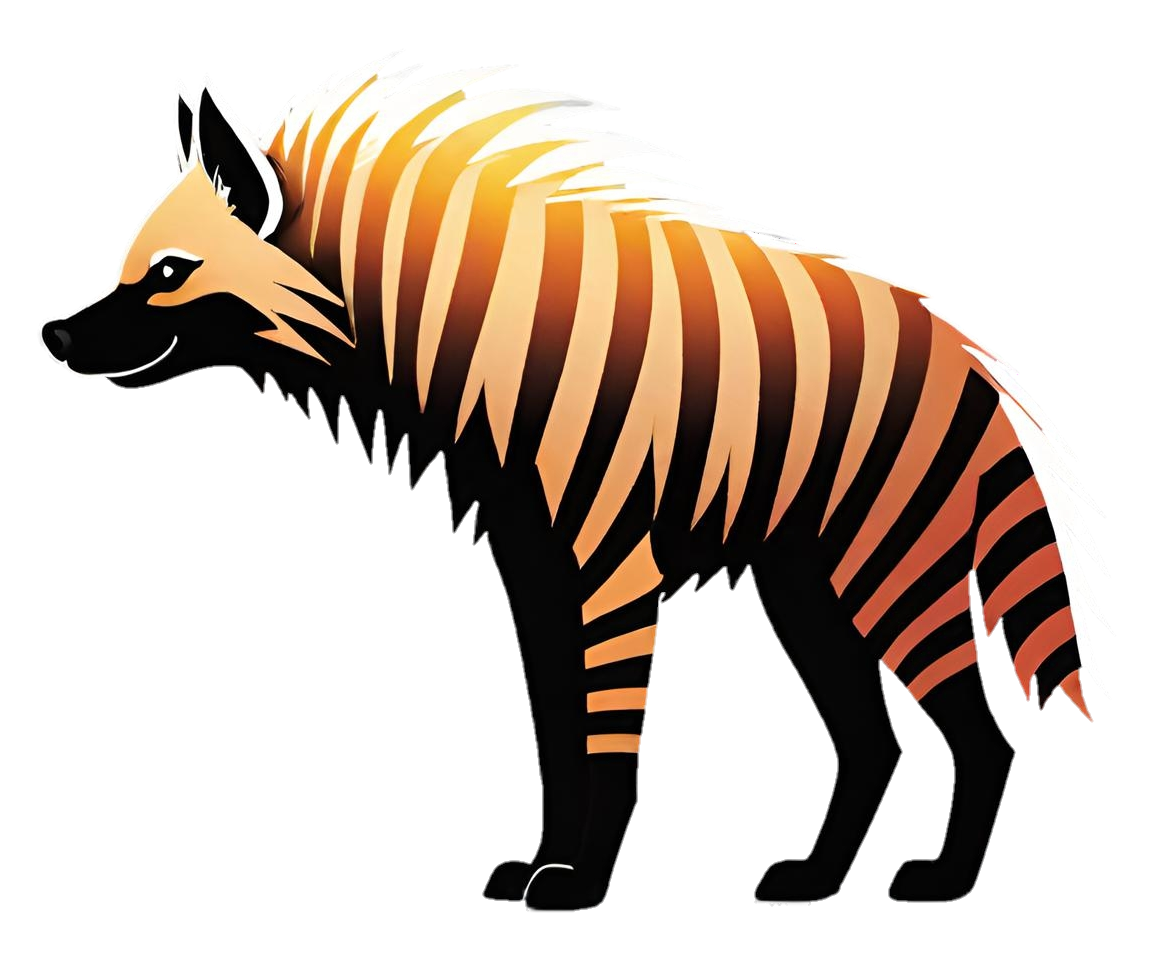

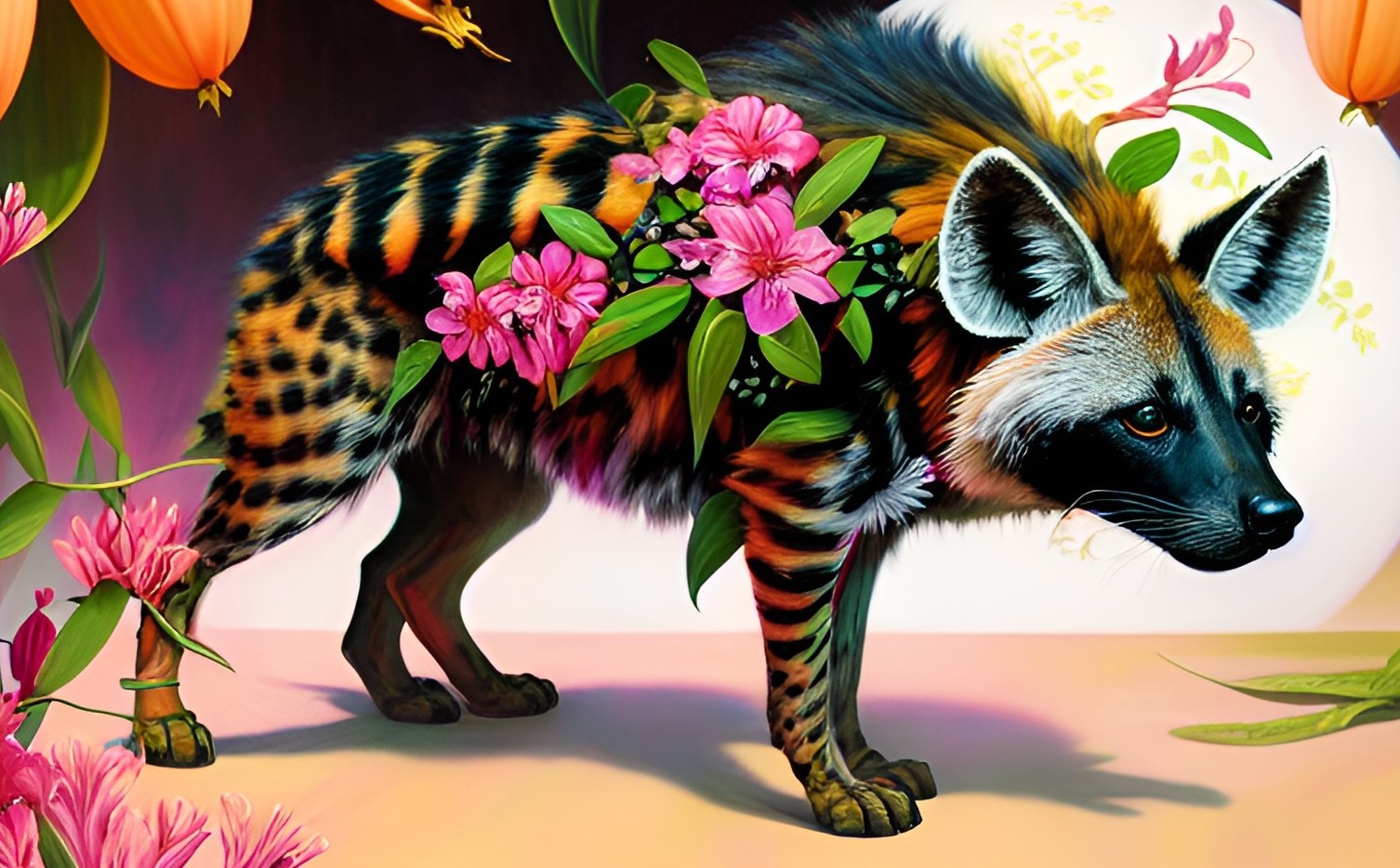


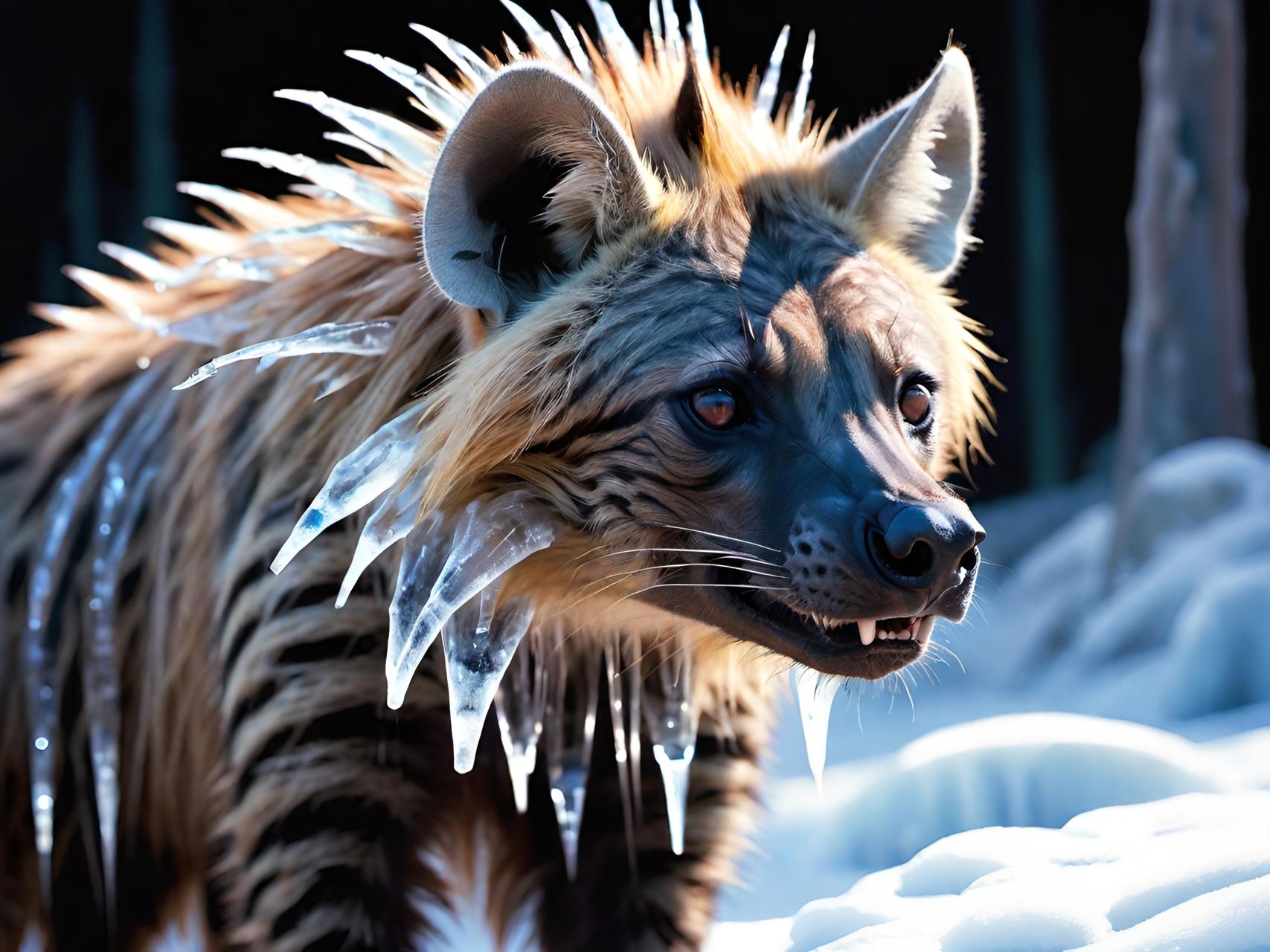

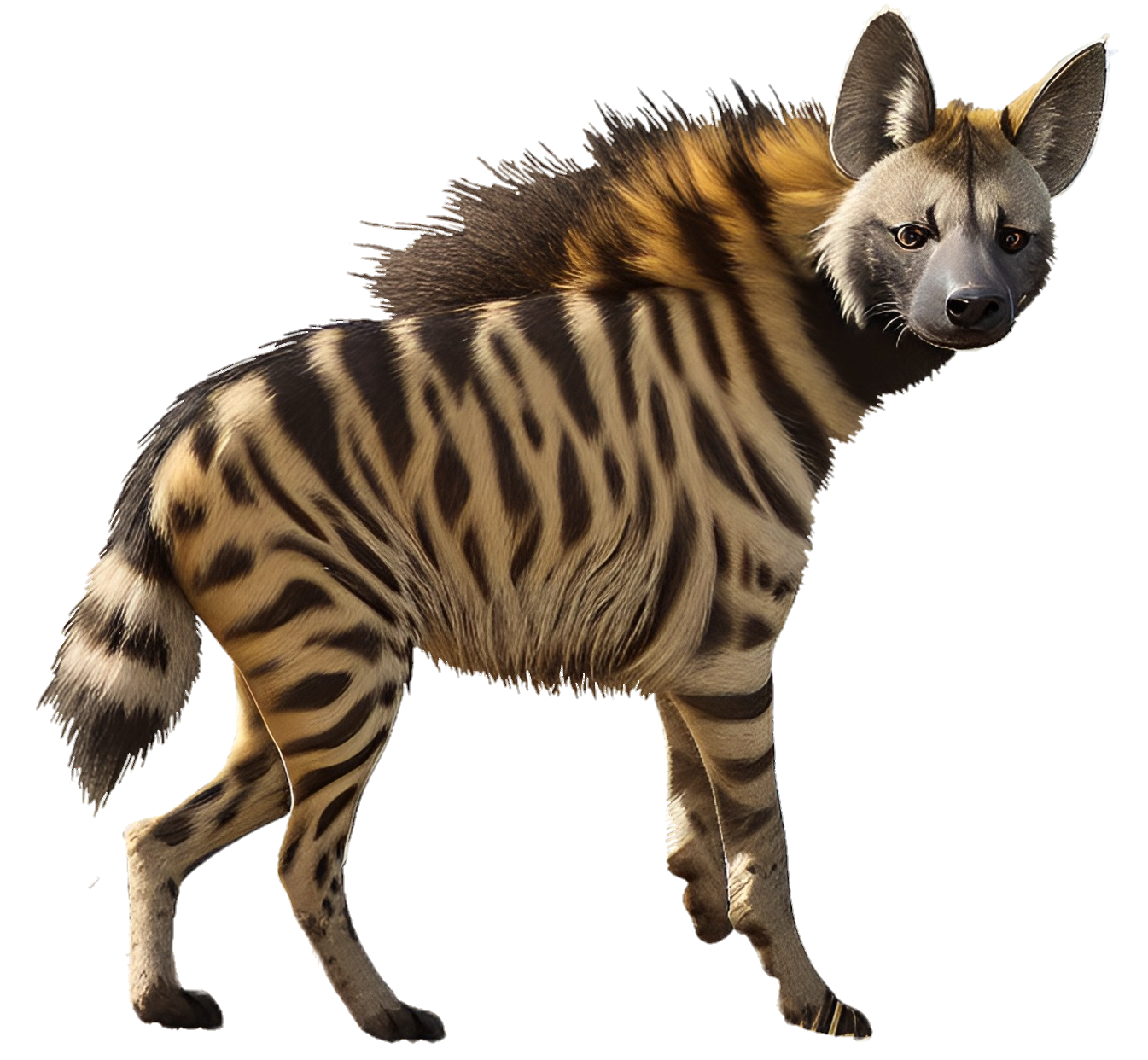


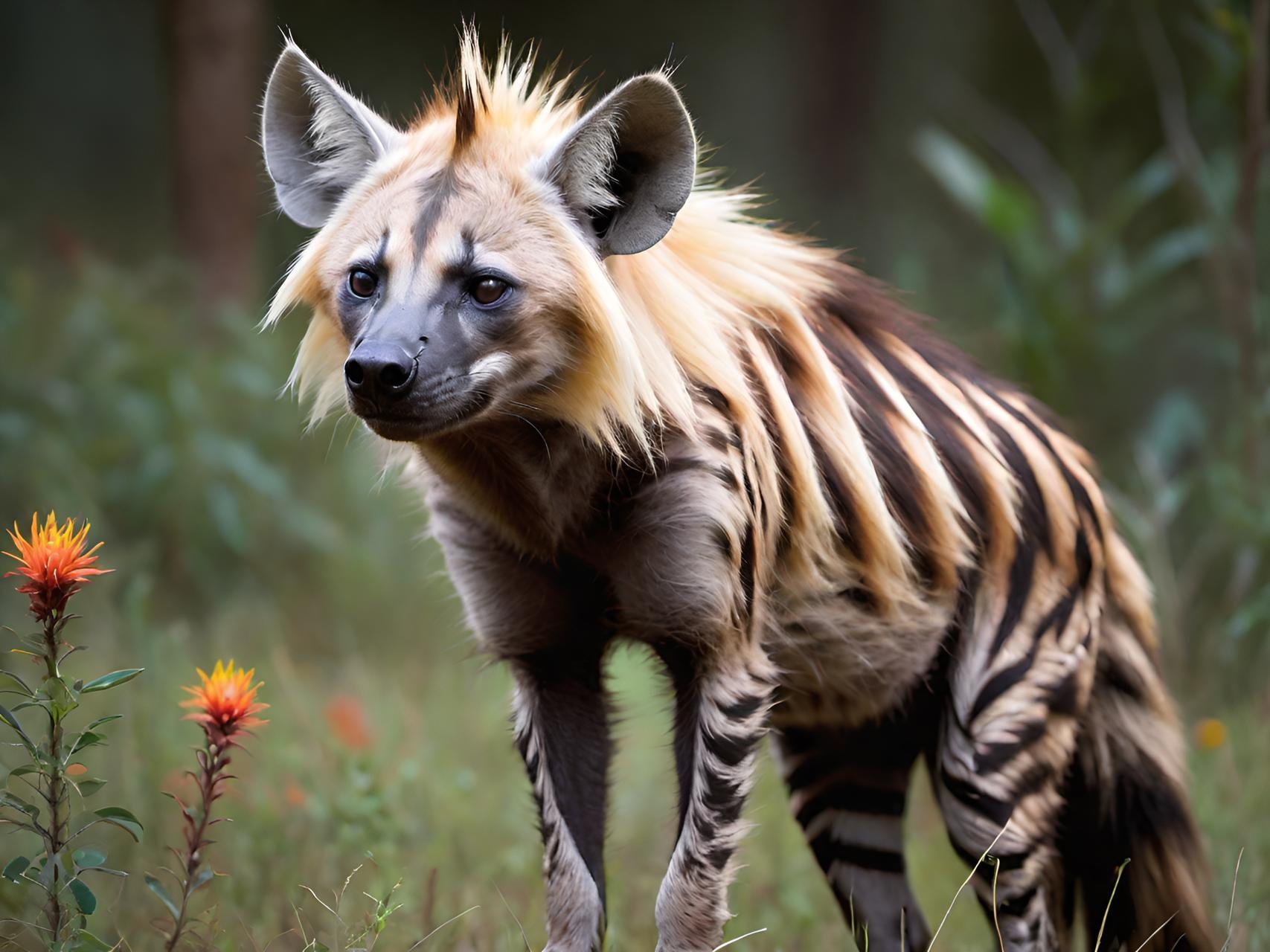






Comments